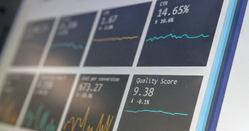Looking for the Best ROI for RCM Automation? Why is the Total Value of Automation The Most Important Metric?
January 30, 2023
Before investing more resources in revenue recycling solutions, all business owners rather know first how much ROI they will receive in exchange; that way, they can make a more substantial decision.
Amy Raymond, VP of revenue recycle operations, spoke at an Annual Meeting hosted by AKASA about the most recent issues facing healthcare systems and how to use a new technique called Total Value, to determine the ROI of RCM automation precisely.
4 Major Takeaways:
1. Automation of revenue cycle management is becoming a must in healthcare systems.
According to a poll by AKASA, 78% of managers say that their organization has experienced staffing challenges and volatile economic conditions recently.
This has pushed them to define a budget to automate their revenue cycle this new year in order to increase revenue, accelerate cash flow and increase productivity and savings.
2. Hard ROI metrics used by health systems do not capture the full impact of automation.
Reduced cost to collect, higher yield, and lower denial rates are actual examples of Hard and Soft ROI.
Automation may impact the following:
- Hours saved
- Patient and employee interaction
- Clean claim rates
- Turnover rates
3. A better understanding of the overall impact can be gained by calculating the total value of automation.
SOFT ROI is more difficult to measure and will only be noticed for a maximum of 2 or 3 years, whereas hard ROI can be easily quantifiable and noticed within the first year of automation. Soft ROI would affect workforce efficiency, patient impact, and policy and regulatory support.
“You’re probably already tracking these things, so it’s less about making sure your automation is compliant with regulations and more about integrating it in such a way that you can demonstrate that improvement is based on automation,” Ms. Raymond explained. “Make certain that your technology partner shares responsibility for reporting; they should be able to assist you in.
4. An AKASA case study.
In August 2019, a hospital with a multi-state health system started using AKASA for claim status automation. Within 18 months, AKASA had reached a monthly completion rate of more than 19,000 claim status checks, which equates to 19 or more FTEs.
Healthcare systems can take better advantage of automation by widening the measurement window and partnering with a vendor invested in helping to report on these metrics.
Recent News

November 07, 2023
UT Arlington’s Smart Hospital: Innovations and Advancements
The University of Texas at Arlington (UT Arlington) innovative hospital has […]
Read More
October 22, 2023
Healthcare’s 2023 Dilemma: Staffing Gaps
The healthcare sector in the US is grappling with a significant […]
Read More
